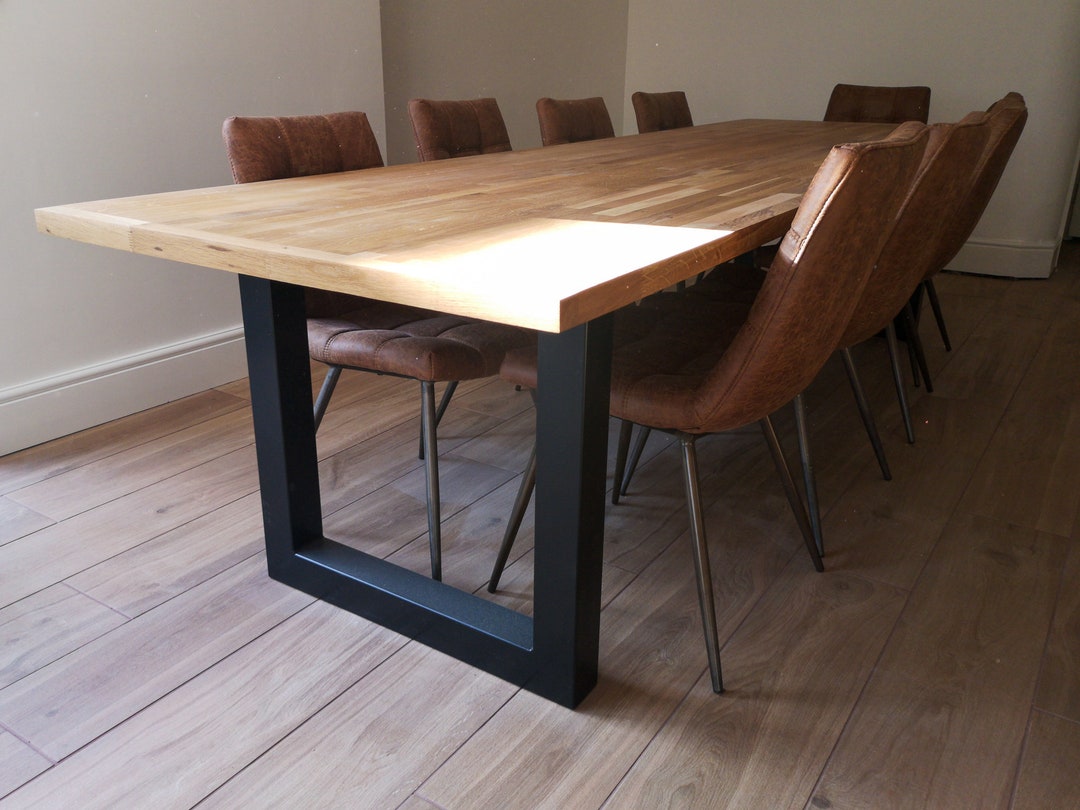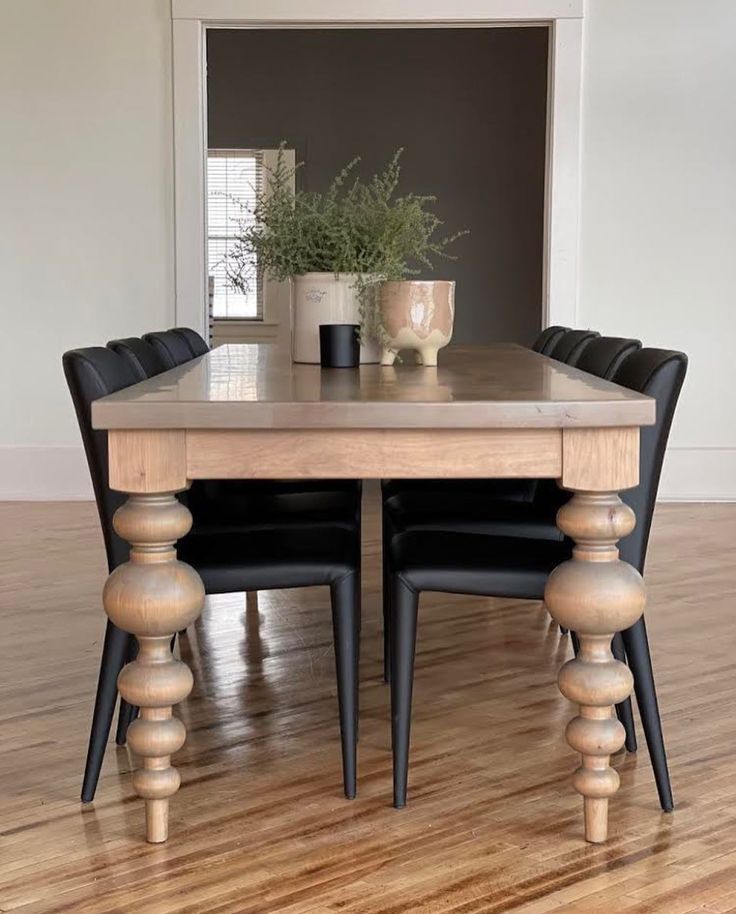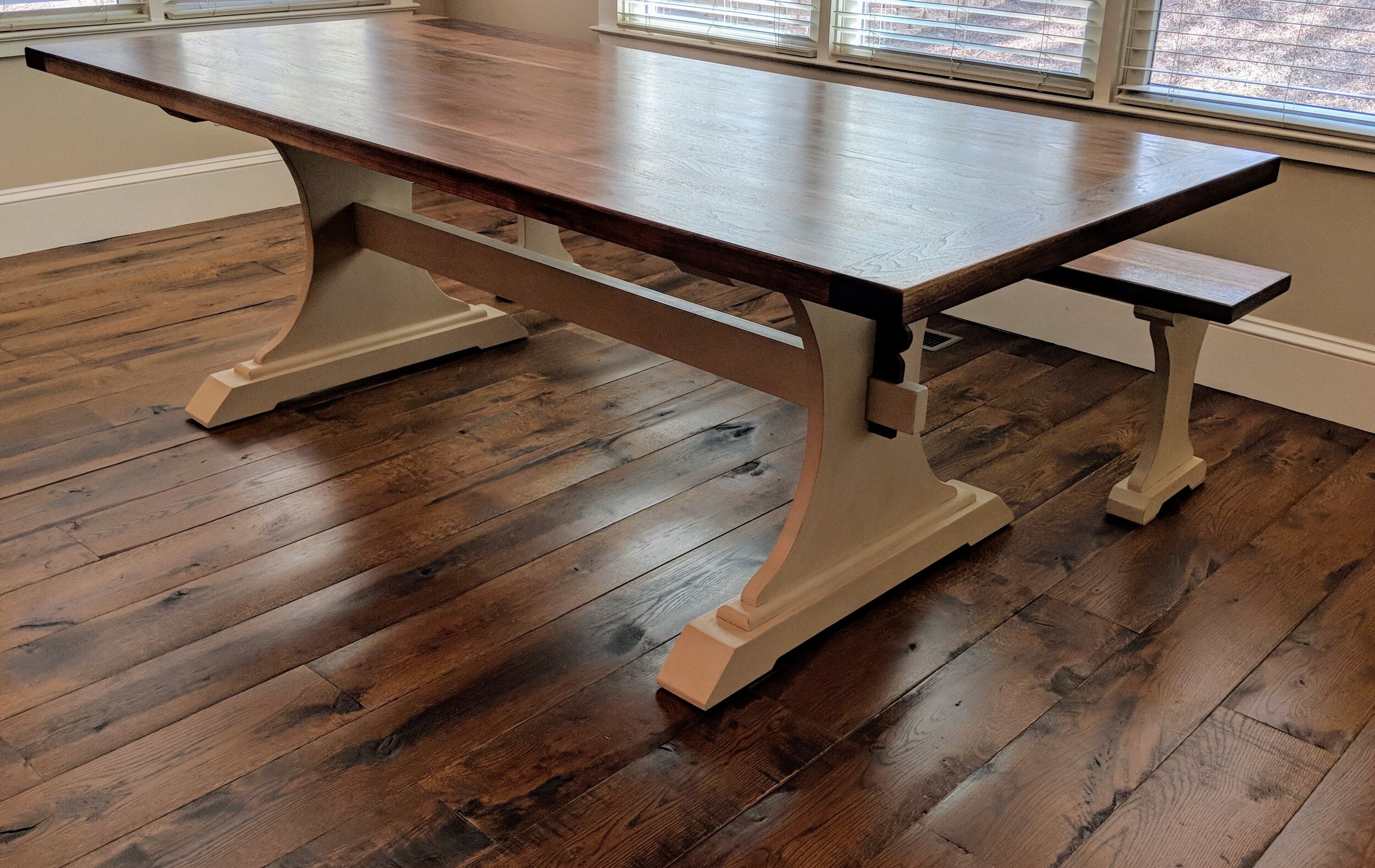The Impact of Dining Room Table Legs on Your Table's Overall Design
Wiki Article
Expert Tips for Installing Dining Space Table Legs for Optimum Stability
When it involves mounting dining-room table legs, achieving maximum stability is paramount for both performance and aesthetic appeals. The process begins with choosing the best products and hardware, complied with by careful placement and factor to consider of weight distribution. Each step plays an important duty in ensuring that the finished item stands up to everyday usage without jeopardizing security or design integrity. However, recognizing the nuances of these components can substantially affect the general outcome. What certain strategies can improve security even better?Pick the Right Legs
When selecting the suitable legs for your dining-room table, it is vital to consider both functionality and aesthetics. The legs you pick will dramatically affect the overall layout and stability of the table. Evaluate the table's intended usage; if you expect constant celebrations, stronger legs, such as those made from strong wood or steel, may be a lot more suitable, as they offer boosted sturdiness and support.Typical dining tables generally vary from 28 to 30 inches in elevation, so ensure the legs straighten with this requirement for convenience. Conical legs can add a modern touch, while turned legs could convey a more timeless aesthetic.

Select Appropriate Hardware
How can the right equipment enhance the security and longevity of your dining-room table? The option of proper hardware is critical to making sure that the legs of your table are safely attached and able to stand up to routine usage. Premium screws, screws, and braces supply the necessary toughness to sustain the weight of the table, in addition to any added loads positioned upon it during gatherings or dishes.When picking screws, select those made from sturdy materials such as stainless-steel or brass, which stand up to rust and keep stability over time. The size of the screws is similarly important; they ought to pass through deeply into the table's structure without endangering stability. For bolted connections, take into consideration making use of lock washers to protect against loosening up because of vibration or motion.
Furthermore, utilizing edge braces can add added assistance, particularly for bigger tables or those with heavier tops. These braces distribute weight evenly and aid maintain the table's shape. Making sure that the hardware you choose is ideal for the particular materials of your table will certainly better improve its overall stability and longevity, enabling you to enjoy your dining experience for years ahead.
Ensure Proper Positioning
Appropriate alignment of dining room table legs is necessary for both aesthetic appeal and useful stability. To attain ideal alignment, begin by measuring the distance from the table's edges to the leg attachment factors.Make use of a level during installment to verify that each leg is vertical to the tabletop. It is advisable to note the preferred leg placements on the bottom of the table with a pencil or covering up tape before protecting them.
Moreover, confirm the placement after the first screws are tightened, as adjustments may be needed his comment is here before fully safeguarding the equipment. By prioritizing correct positioning, you not just improve the table's overall design yet likewise ensure that it continues to be useful and steady for several years to come.

Consider Weight Circulation
After guaranteeing proper placement of the dining space table legs, it is essential to consider weight circulation to improve stability and functionality. dining room table legs. Appropriate weight circulation is essential in preventing guaranteeing and wobbling that the table can sustain its intended load without risk of tipping or falling downWhen positioning the legs, guarantee they are placed at equal distances from the center of the table to evenly disperse the weight throughout the framework. Think about the weight of the table top and any kind of products that will often hinge on it, such as tabletop devices or attractive pieces. Tables with larger surfaces must preferably have legs located closer to the edges, as this maximizes the base of support and reduces the important link risk of instability.
In addition, if the table is planned for usage in a high-traffic location, think about making use of larger products for the legs or including supporting elements, such as cross-bracing or a lower shelf - dining room table legs. These adjustments can assist preserve equilibrium and prevent shifting throughout use. Eventually, a well-considered weight circulation technique will dramatically enhance the table's general efficiency, guaranteeing it remains a functional and eye-catching focal point for your dining area
Test Stability Before Use
Examining the stability of the dining room table before use is a critical action that ought click this link to not be forgotten. If the table shows instability, determine the legs or joints that may need modification.Following, examine that all fasteners and screws are tightened appropriately. Loosened connections can result in instability and potential damages over time. If necessary, make use of timber glue on joints to boost stability, making certain to permit adequate drying time.

Final Thought
To conclude, the installment of dining-room table legs needs mindful consideration of materials, alignment, equipment, and weight circulation to achieve maximum security. By choosing high-quality fasteners and strong legs, ensuring exact alignment, and distributing weight equally, the architectural integrity of the table can be dramatically boosted. Performing a stability examination before regular use better makes certain that the table will certainly endure daily pressures, therefore providing a trustworthy and secure eating experience.When it comes to mounting dining room table legs, attaining maximum security is paramount for both functionality and looks. The legs you choose will dramatically impact the overall design and stability of the table (dining room table legs). Standard eating tables commonly range from 28 to 30 inches in height, so guarantee the legs align with this standard for convenience.Proper positioning of eating room table legs is crucial for both aesthetic charm and practical stability.In final thought, the installment of eating space table legs requires careful consideration of products, placement, hardware, and weight circulation to accomplish optimum stability
Report this wiki page